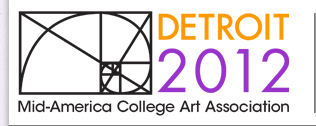Session Title
What's Skill Got to Do with It? SNAG Panel
Start Date
4-10-2012 3:00 PM
End Date
4-10-2012 4:30 PM
Session Description
Living in the long shadow of the ready made with the primacy of conceptual content often articulated through the handmaiden of hired or borrowed skill, why or why not teach discipline-based craft skills to undergraduate students? Can deeply skilled making as a physical craft contribute special knowledge to contemporary art? Or with the dissolution of many discipline-based areas within academia, should our focus as educators target the cultivation of ideas with making deployed as a subsequent undertaking? Do contemporary redefinitions of the “artists hand” through immaterial and collaborative skills dissolve the need for knowing materials? What are we teaching our students to be skillful at? For what end?
Panelists who teaching metalsmithing and jewelry design from across the Midwest will respond to these questions while reflecting on their teaching philosophies, forecasting how and/or what their students will contribute with the skills they have learned, and the potential of this discipline to be a relevant and vital way of thinking and making today.
session description
What's Skill Got to Do with It? SNAG Panel
Living in the long shadow of the ready made with the primacy of conceptual content often articulated through the handmaiden of hired or borrowed skill, why or why not teach discipline-based craft skills to undergraduate students? Can deeply skilled making as a physical craft contribute special knowledge to contemporary art? Or with the dissolution of many discipline-based areas within academia, should our focus as educators target the cultivation of ideas with making deployed as a subsequent undertaking? Do contemporary redefinitions of the “artists hand” through immaterial and collaborative skills dissolve the need for knowing materials? What are we teaching our students to be skillful at? For what end?
Panelists who teaching metalsmithing and jewelry design from across the Midwest will respond to these questions while reflecting on their teaching philosophies, forecasting how and/or what their students will contribute with the skills they have learned, and the potential of this discipline to be a relevant and vital way of thinking and making today.

